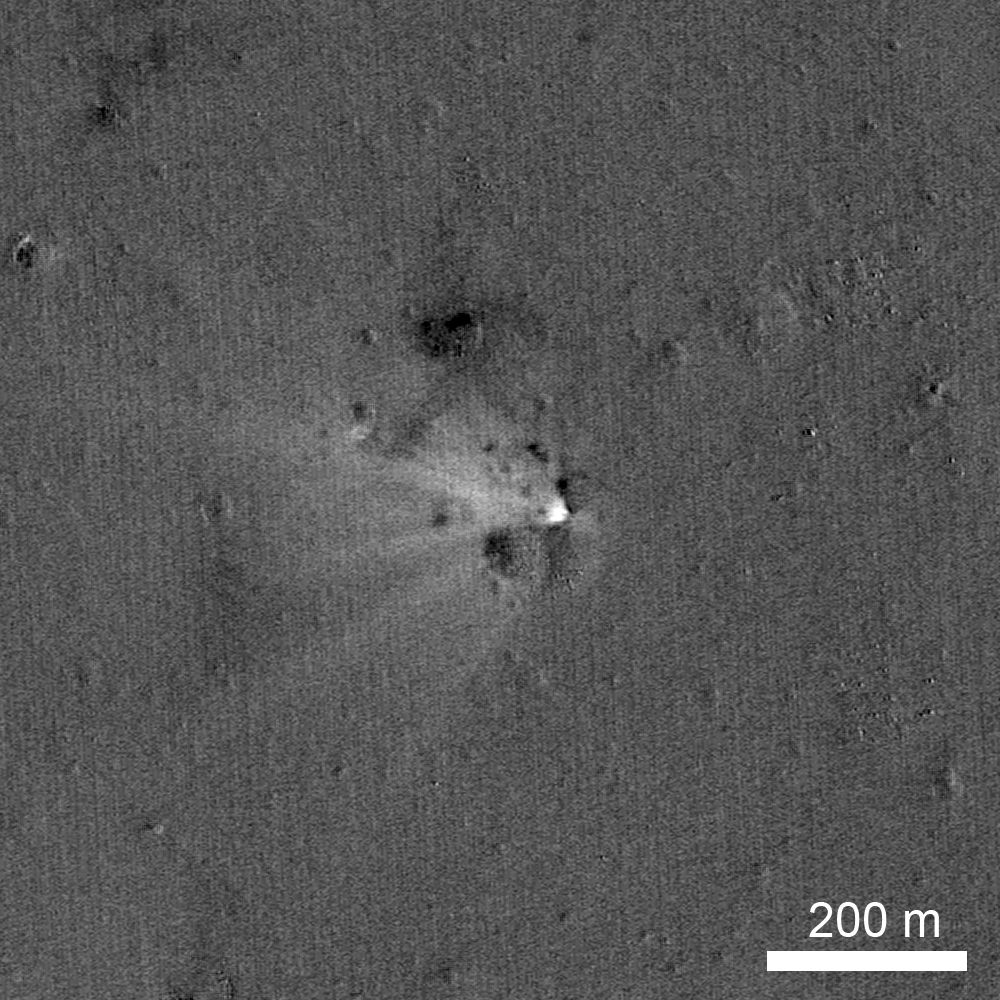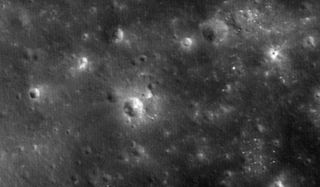
A NASA spacecraft has spotted the place where one of its brethren slammed into the surface of the moon six months ago.
The agency's Lunar Reconnaissance Orbiter (LRO) photographed a new lunar crater that researchers say is the grave of NASA's LADEE probe, which ended its mission with an intentional crash onto the moon's surface on April 18, 2014.
LADEE's grave lies about 0.5 miles (0.8 kilometers) from the eastern rim of the larger Sundman V crater, just 0.2 miles (0.3 km) north of the spot where mission team members predicted the spacecraft would go down based on tracking data, NASA officials said. Sundman V lies on the far side of the moon, away from the Apollo landing sites and other areas of historical importance.

"I'm happy that the LROC team was able to confirm the LADEE impact point," LADEE project manager Butler Hine, of NASA's Ames Research Center in Moffett Field, California, said in a statement. (LROC is the Lunar Reconnaissance Orbiter Camera aboard LRO, which captured the images). "It really helps the LADEE team to get closure and know exactly where the product of their hard work wound up."
The new crater is less than 10 feet (3 meters) wide. It's so small because LADEE was just the size of a washing machine, and the probe was traveling relatively slowly (3,800 mph, or 6,116 km/h) when it impacted the surface,.
The LROC team was able to spot LADEE's impact crater after developing a new tool that compared before-and-after images of the same lunar sites, researchers said.
The $280 million LADEE (Lunar Atmosphere and Dust Environment Explorer) mission launched in September, on a quest to study the moon's wispy atmosphere, known as an exosphere, and learn more about lunar dust. LADEE completed its mission successfully and was brought down intentionally in April because it was running out of fuel.
Get the Space.com Newsletter
Breaking space news, the latest updates on rocket launches, skywatching events and more!
LRO launched in September 2009 and recently received a two-year mission extension.
"With LRO, NASA will study our nearest celestial neighbor for at least two more years," said LRO project scientist John Keller, of NASA’s Goddard Space Flight Center in Greenbelt, Maryland. "LRO continues to increase our understanding of the moon and its environment."
Follow Mike Wall on Twitter @michaeldwall and Google+. Follow us @Spacedotcom, Facebook or Google+. Originally published on Space.com.
Join our Space Forums to keep talking space on the latest missions, night sky and more! And if you have a news tip, correction or comment, let us know at: community@space.com.

Michael Wall is a Senior Space Writer with Space.com and joined the team in 2010. He primarily covers exoplanets, spaceflight and military space, but has been known to dabble in the space art beat. His book about the search for alien life, "Out There," was published on Nov. 13, 2018. Before becoming a science writer, Michael worked as a herpetologist and wildlife biologist. He has a Ph.D. in evolutionary biology from the University of Sydney, Australia, a bachelor's degree from the University of Arizona, and a graduate certificate in science writing from the University of California, Santa Cruz. To find out what his latest project is, you can follow Michael on Twitter.